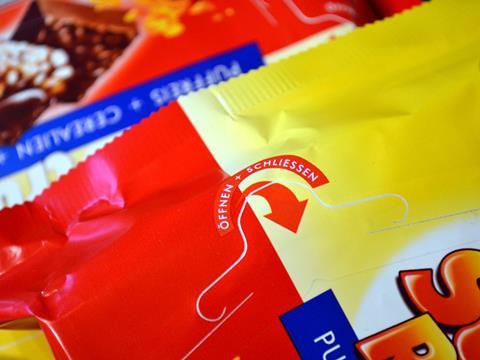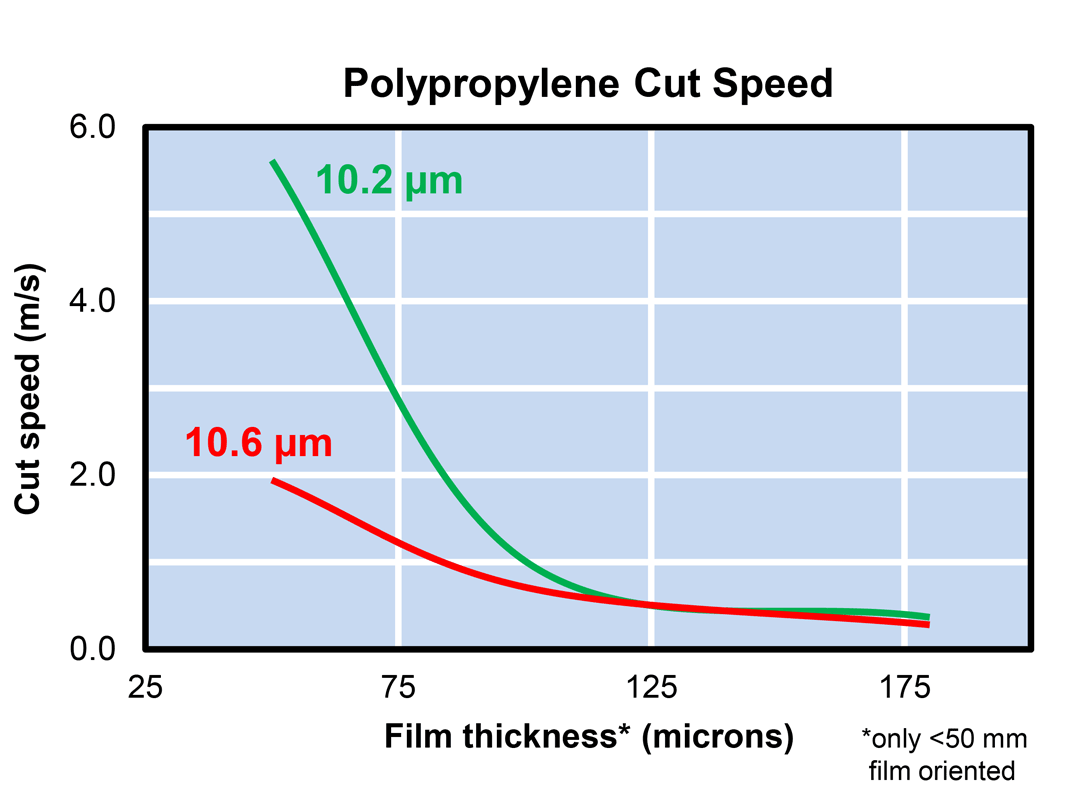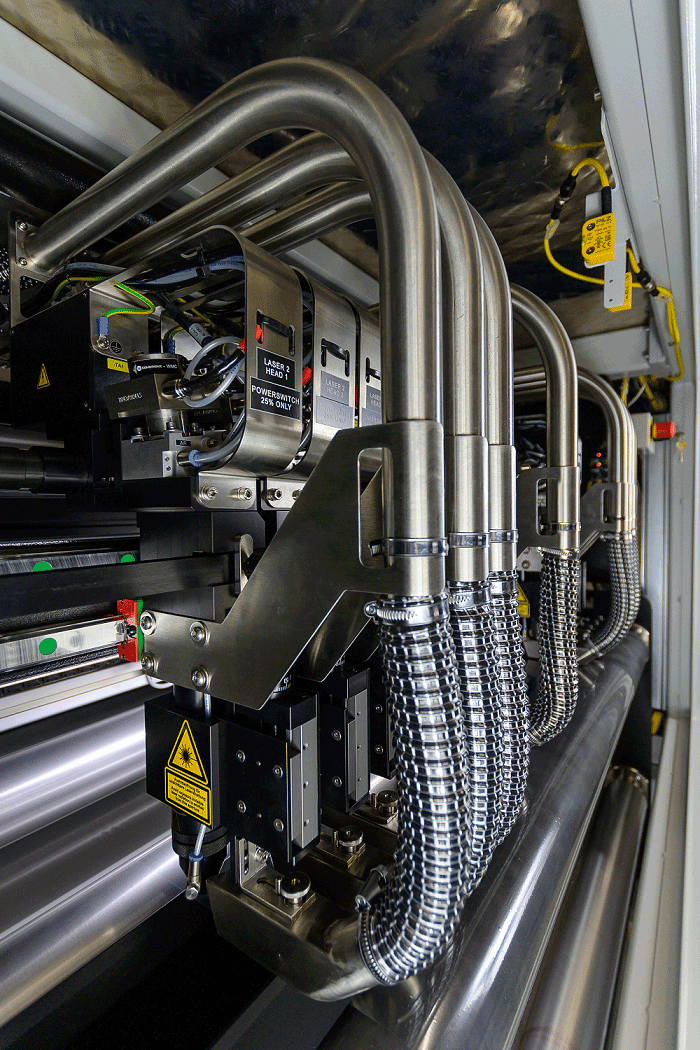
The diverse requirements in terms of speed, cost, operational flexibility, and quality encountered in laser-based packaging manufacturing applications have led to the development of a wide variety of specialized production solutions. In fact, laser technology is offered in such diverse implementations that it can be daunting for the developer to choose the right one for a particular application. This article, written by Dr.-Ing. Hansjörg Rohde, Product Line Manager at Coherent, reviews some of the common embodiments of laser tools for packaging production, in this case from Coherent, to help guide developers in understanding how to choose the right technology for their particular application.
Why Lasers?
Lasers have become widely used in packaging production because they offer superior results, increased flexibility, and reduced costs over traditional mechanical methods, such as blades and punches. One reason for this is that non-contact laser tools do not wear over time. This eliminates downtime for tool replacement and also delivers highly consistent results over time.
Furthermore, in the field of flexible packaging, laser processing enables precise control over scoring depth and micro-perforation hole size, both of which are extremely hard to achieve with mechanical tooling. It also doesn’t impart any force to the plastic films which could distort or tear them.
In addition, laser processing leaves a very clean, processed edge. Cutting debris can be problematic because it settles on other parts of the machinery, and can affect their efficiency.
Laser processing also offers operational flexibility. Processing parameters are varied through software, making it easy to switch between jobs or to individualize packaging on-the-fly. Furthermore, these changes don’t incur any tooling or setup expenses.
Finally, laser converting is fast. It can operate at the speed of the web processing equipment used in modern production lines, which often run at several hundred meters per minute.
CO2 Laser Wavelengths
In laser processing, the laser beam is focused down to a small spot on the workpiece. The light is absorbed by the material, heating it to melting and then evaporation. The fumes are then removed by an efficient exhaust.
Mirror scanners are used to sweep the laser beam over the surface of the plastic film in order to produce the desired processing pattern. The laser is directly modulated (on/off pulsing) in order to stop and start laser processing as needed, as well as to vary the depth of processing when scoring.
Most polymer films absorb well in the infrared. This has made the CO2 laser, which outputs in the part of the spectrum, the laser of choice for packaging applications. Plus, CO2 lasers are reliable, compact, and relatively inexpensive, even at higher power output levels.
However, the infrared absorption spectrum of polymer films actually consists of numerous sharp peaks. Furthermore, flexible packaging involves very thin films, which often only absorb a small percentage of the incident laser power.
For this reason, precisely matching the laser wavelength to the absorption characteristics of the thin film(s) can dramatically increase the processing speed and efficiency for a given laser power level. While many plastics can be efficiently processed at the traditional CO2 wavelength of 10.6 µm, polypropylene and BOPP, in particular, have been found to have significantly greater absorption at 10.2 µm.

Coherent is one of the few laser manufacturers with the capability of developing its own new laser sources specifically for the benefit of the flexible packaging industry. The result is a range of CO2 lasers at various wavelengths (10.6 µm, 10.2 µm and 9.3 µm) and power levels, enabling converters to precisely optimize their processes for the material being used.
Packaging Solutions
In order to produce cost-effective manufacturing solutions, it’s imperative to design systems that deliver all the required functionality, without including unneeded features that might drive up cost. As a result, manufacturers like Coherent provide a range of specialized products that can readily be configured to meet a customer’s precise requirements.
For example, Coherent StarPack CW systems are designed for scribing and perforating in the cross-web direction, which is typically required for the production of bags and pouches. Plus, StarPack CW systems can make arbitrarily shaped scribing lines, suitable for re-closable flaps or circular easy tear lines in the corners of packaging.
StarPack CW utilizes high-performance scanner heads with three axes to enable extremely fast beam positioning over an enormous working field. Depending on the application, web width and other customer‘s requirements, Coherent can mount up to nine laser sources on a StarPack CW system. Typically, these are integrated into the slitter winder.
StarPack CW Hybrid is an extension of the StarPack CW that provides an economical route to free-form perfing and scribing in both web and cross-web directions. This is accomplished by splitting the output of a single laser into as many as four scanners simultaneously. This approach increases throughput while still minimizing cost. In this case, each scanner must produce the same pattern, in which it’s possible to flip (mirror image) that pattern for one or more of the scanners.
StarPack WD is the Coherent solution for performing cost-effective web direction scribing and perforating in a single operation. Typical uses for this would be micro-perforation (for controlled ethylene exchange) and scribes for easy opening packaging. Hole sizes for this are typically in the 50 µm to 200 µm range, depending on the material.
StarPack WD maximizes throughput and economy by utilizing up to two separate lasers whose output is split and directed into up to eight separate processing heads. System software even enables scribing and perforating to be combined in a single process, including mixing of hole sizes, scribing lengths, and patterns all at the same time.

The Coherent StarPack AP delivers the most sophisticated mix of functionality, enabling virtually any cross-web or web direction process all in a single system. It is intended to be the ideal choice for complex manufacturing processes, and for converters who want to be prepared for virtually any customer requirement.
The StarPack AP can accommodate up to four separate lasers (having different wavelengths) and scanning units to produce highly complex scribe lines at high web-speeds on a variety of materials. It even offers double-spot focusing lenses for splitting the laser beam, resulting in dual easy tear lines which help to optimize easy opening. And, it can produce a row or small area of micro-holes to deliver a valve-like functionality for microwaveable packaging.

Another specialized product is the StarPack Pouch, a compact system designed for integration into pouch making machines, or within the form fill and seal unit. Because the web speed in pouch making systems is considerably lower than in slitter winders, StarPack Pouch only requires 100 W of laser power. This makes the system highly cost-efficient.
As packagers seek to deliver increasingly innovative products in order to differentiate themselves, the added value achieved with laser processing becomes a more important competitive advantage. But, implementing laser technology in a cost-effective way requires a solution with just the right mix of performance and capabilities.
Click here to learn more about Coherent's unique offering.










